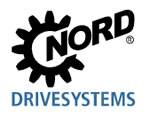3D printer builds a cube from a vat of goo "¦ using a phone screen
3D Printing from Prototype to Production
Manufacturers most upbeat in two years, ISM survey shows
Year in Review: Industry Embraces Supply Chain Trends of 2016
YCF - 2017 could be year of smart factory
Dubai Govt, US startup to team up for 3D printing
Upcoming Tradeshow, Conference & Exhibition Summary - February - April 2017
What are the business and security impacts of Industry 4.0?
Using 3D Printing, Lithography & Soft Robotics: New Prosthetic Hands Made for $50 at Cornell
One-Stop Repair for Food & Beverage Processing Equipment
Japan's Rust Belt Counting on Robonomics to Run Assembly Lines
Tough PLA - Advanced 3D Printing Material
OEMs Consider Cross-Border Move in Face of Uncertainty
A New Use for High-Speed Fiber Optics: Connecting Smart Factories
Spanish City Installs 3D-Printed Bridge
Records 2611 to 2625 of 3070
First | Previous | Next | Last
Featured Product

Improve productivity and achieve consistent, high-quality welds with mechanized welding solutions.
Manufacturing and Automation - Featured Company

